A shade garden is a green and contemplative refuge. It can also be a botanical calendar, with flowers signaling the change of seasons. Well-chosen perennials for shade provide texture and pattern, flowers, and sometimes even fruit. They offer an indispensable layer of interest alongside the architecture of shrubs and trees, and the seasonal excitement of shade-loving annuals. Perennials are plants that return every year after a dormant period and they usually bloom for a few weeks. Choosing perennials whose bloom-time is staggered over the growing season gives us that gift that gardeners, in particular, enjoy: anticipation. Our favorite perennials for shade work harder, though, and are about more than flowers—their foliage or form is interesting even when the plant is not flowering. Here are 13 of our favorites.
Foamflower, Tiarella cordifolia
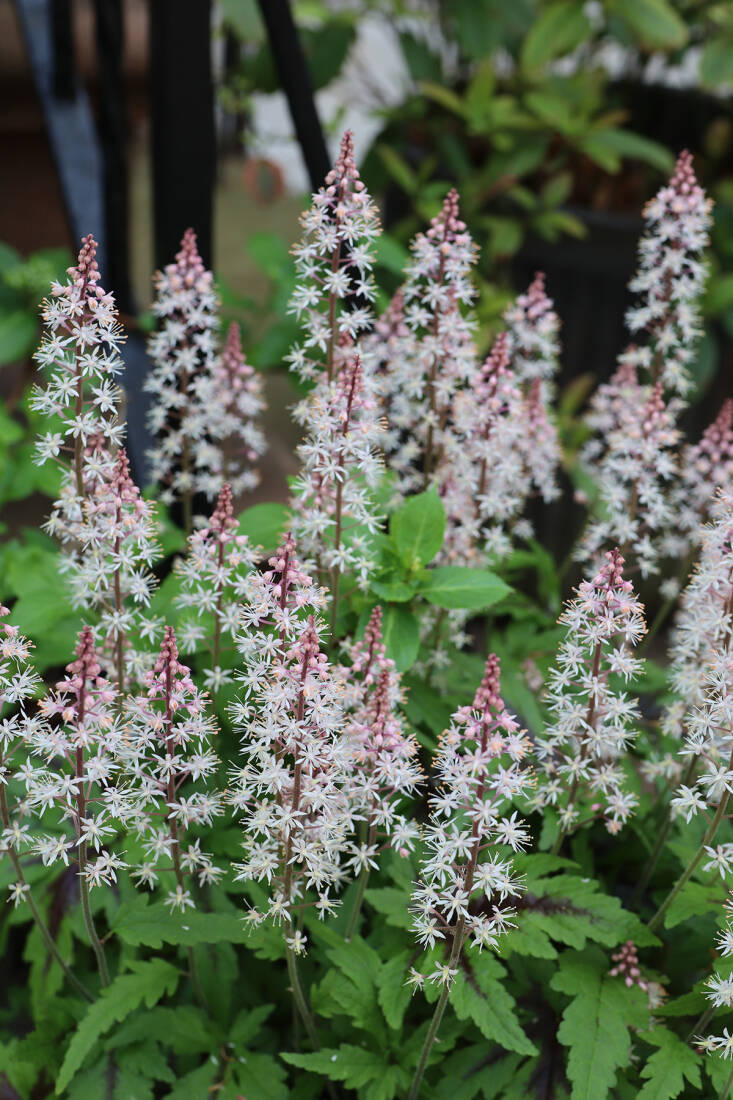
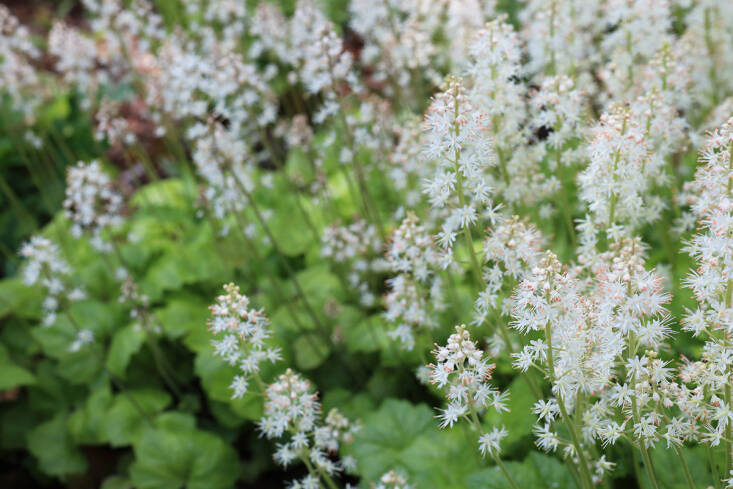
Foamflower blooms in early spring, creating frothy pockets of brightness in the garden. This species of Tiarella propagates itself, establishing new plants from skinny surface-runners, making it a perfect naturalizer for shady path edges and woodland floors. When not in bloom, its maple-shaped leaves create a softly textured quilt. This Eastern native is hardy from USDA zones 4 (and possibly 3) to 9.
Doll’s eyes, Actaea pachypoda
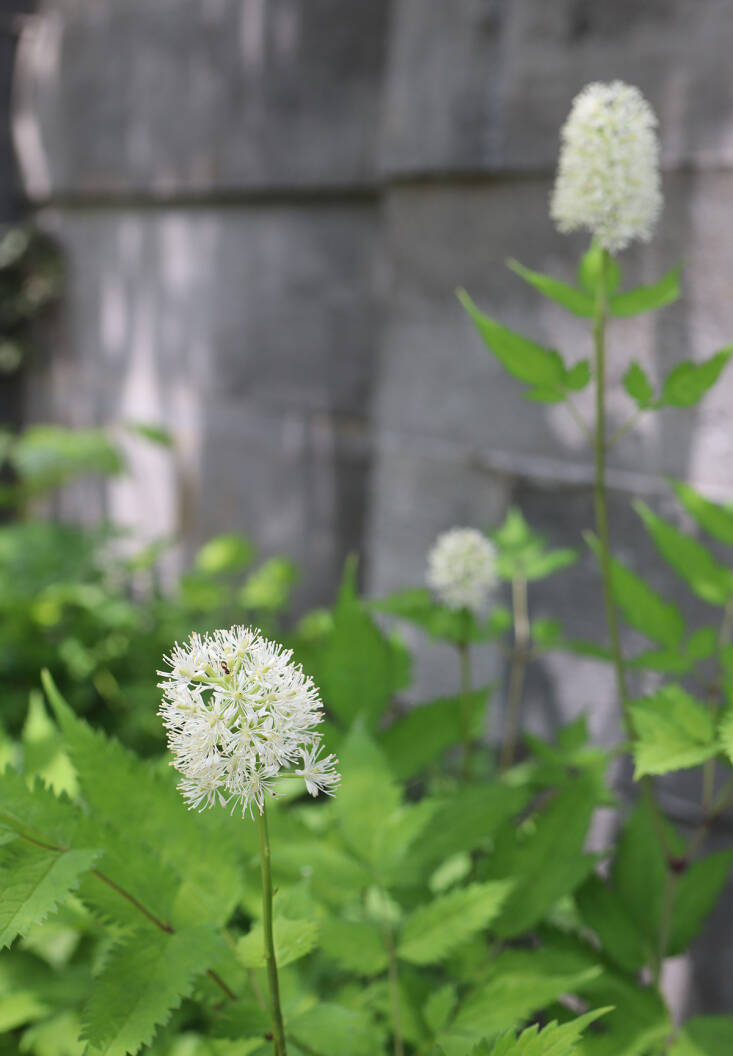
Perhaps one of the best-scented perennials for shade, doll’s eyes are also known as white baneberry, thanks to the plants’ Halloween-ready, toxic white fruit on blood-red stalks in late fall. But in spring, they are all sweetness, with lemon-scented white flowers. This woodland native relishes full shade and blooms in mid-spring above prettily toothed leaves. Doll’s eyes are hardy from zones 3 to 8.
Wake robin, Trillium species
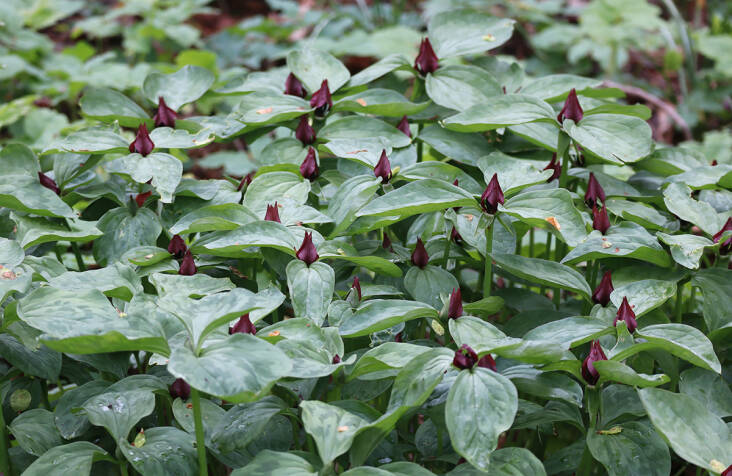
The understated elegance of native Trilliums belongs to a woodland spring. Planted under deciduous trees in soil rich in leaf humus or compost, they bask in spring sunshine and shelter in early summer shade. They are especially effective planted in groups with companion plants that fill out when the Trilliums are dormant, from summer onwards. Different species have blooms that may be white, yellow, or red, with erect or nodding flowers, and most are hardy within zones 4 to 7.
Meadow rue, Thalictrum species
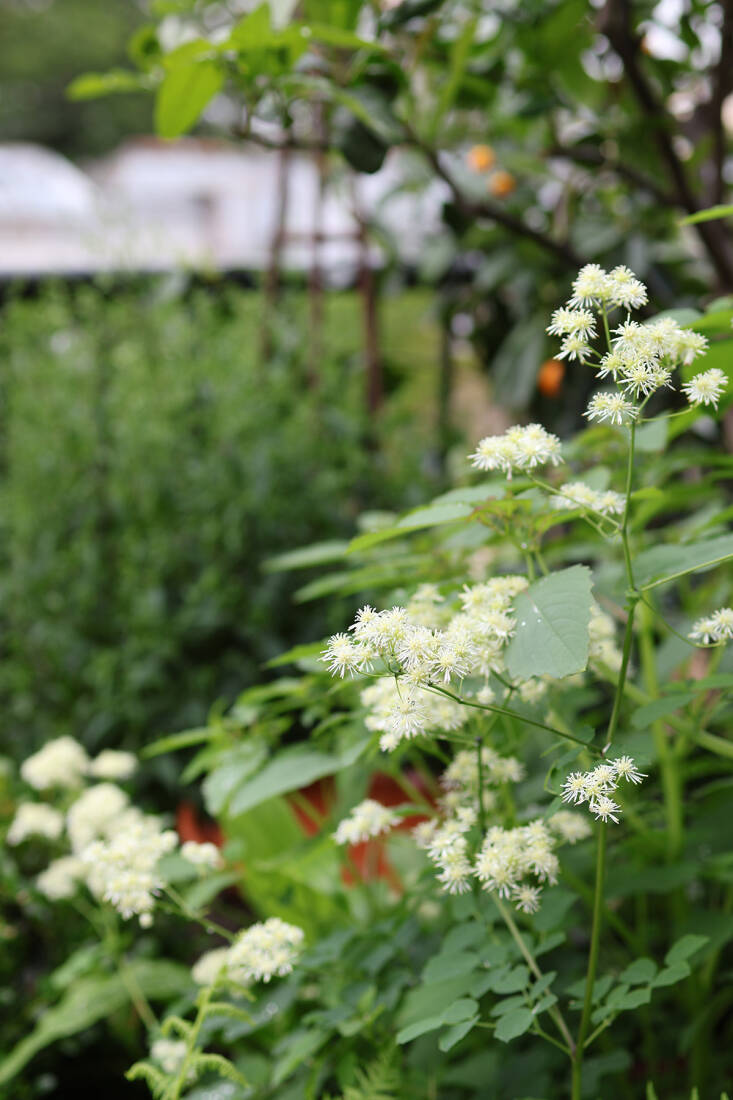
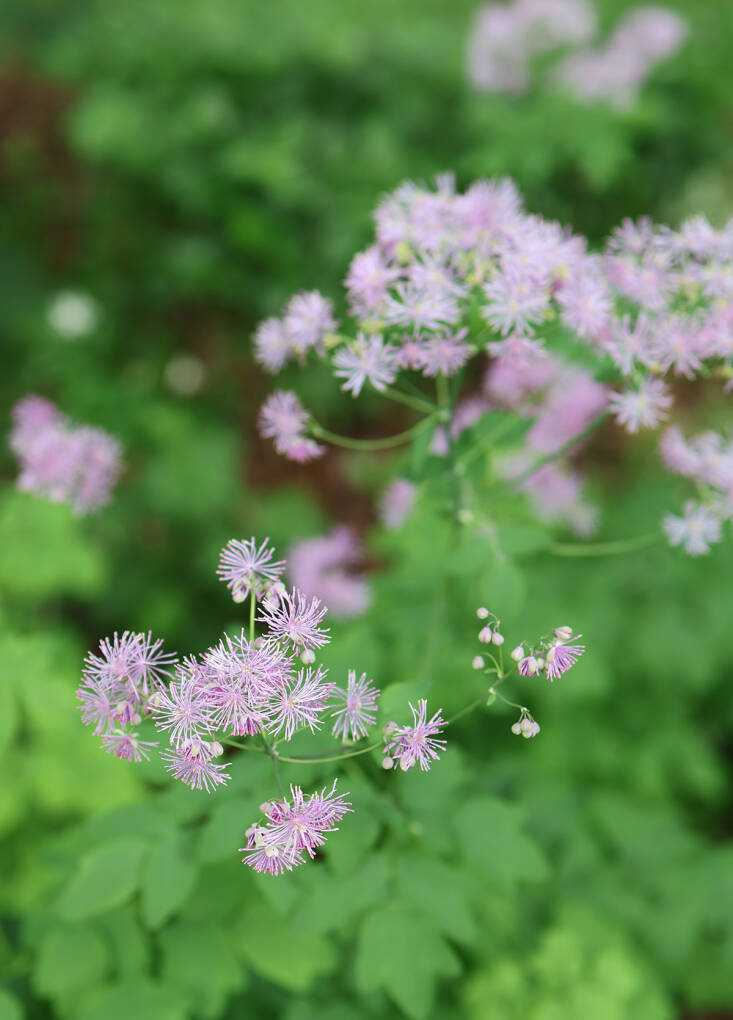
Festooned with fluffy flowers in early summer, the slender stems of meadow rue extend far above the plants’ lacy foliage, adding height without heaviness to shade gardens. Best planted in high or dappled shade, or morning sun, various species of meadow rue have white or lilac flowers. They grow well in pots, but require ample water in dry spells. Meadow rues are hardy from zones 4 to 8, depending on the species.
Canada anemone, Anemone canadensis
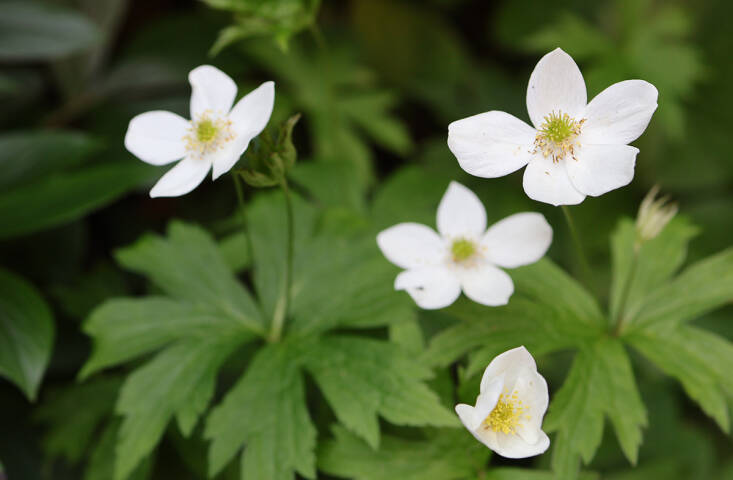
Relishing dappled or afternoon shade, Canada anemone is spectacular in late spring to summer bloom, and is relished by pollinators. Anemone canadensis will grow in full to dappled shade, or morning sun, and is hardy from zones 3 to 8.
Tall thimbleweed, Anemone virginiana
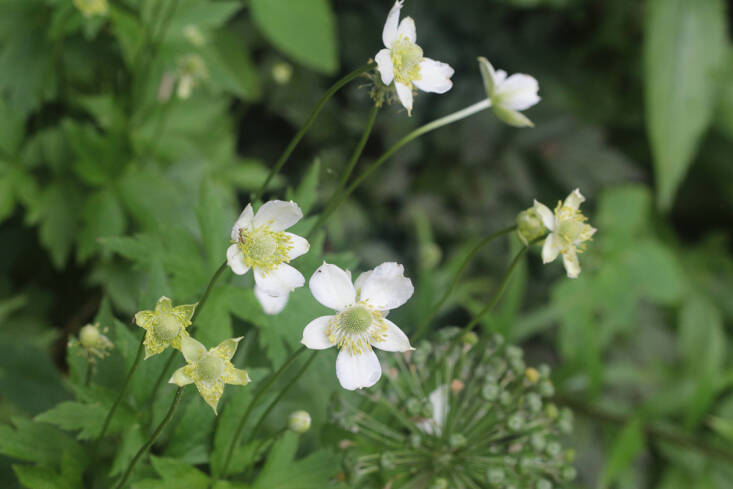
Another of the native perennials for shade, tall thimbleweed is also an anemone, adding effortless height to late spring and early summer shade gardens. After the petals have dropped the elongated seed heads remain very ornamental. This Midwestern native is hardy from zones 2 to 8.
Perennial geraniums
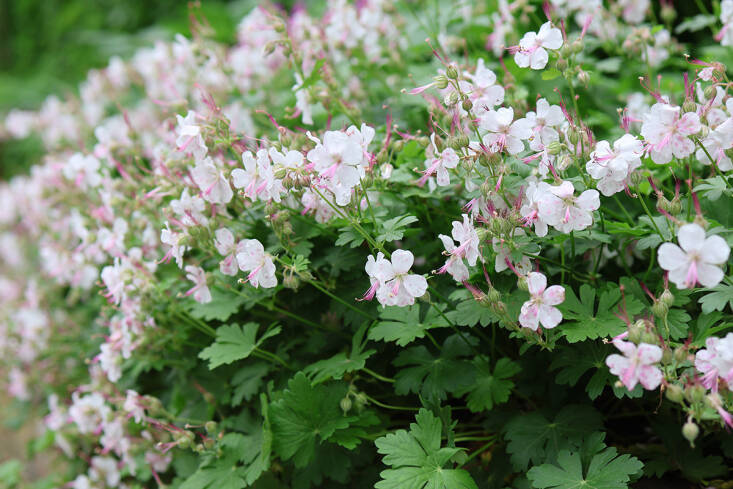
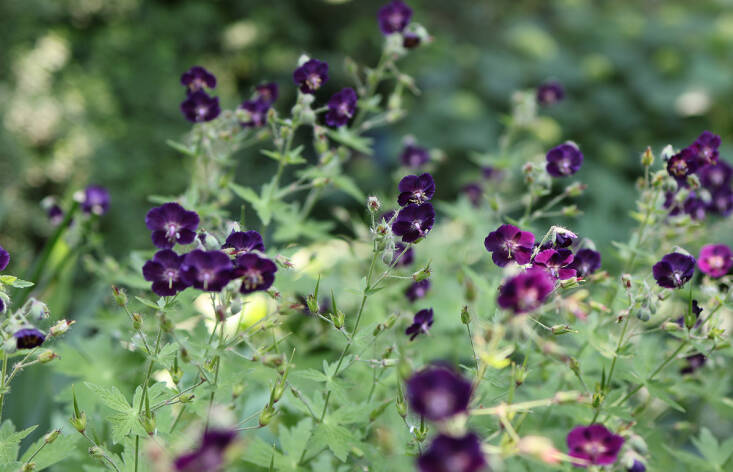
True geraniums are perennials (the bright geraniums of windowbox and hanging basket fame are Pelargoniums). One of the lowest-maintenance perennials for shade, geraniums erupt into bloom in late spring, and form an undemanding groundcover when not flowering. All they ask for is an occasional drink. Geraniums are hardy from zones 5 to 8.
Bowman’s root, Gillenia trifoliata
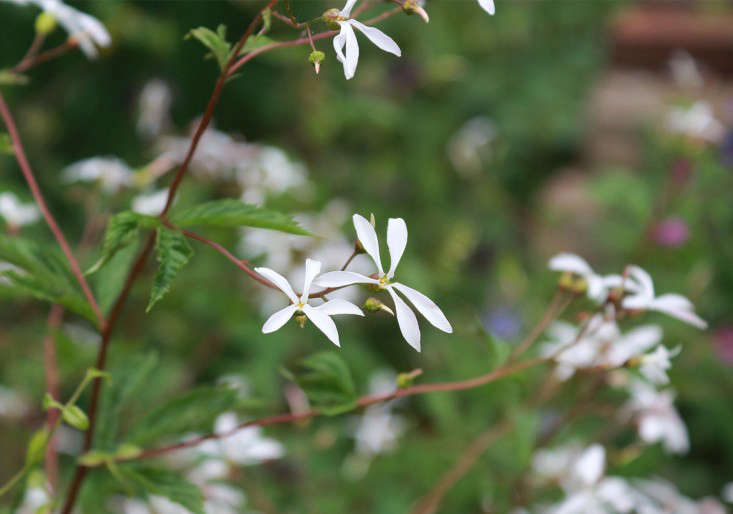
Bowman’s root is like the Gaura of the shade: delicate white flowers dancing in the lightest of breezes, bringing movement and grace to the early summer shade garden. The plant can grow tall, around two feet-plus, and thrives in the high shade of deciduous trees, or in afternoon shade. Bowman’s root is hardy from USDA growing zones 4 to 8.
Hostas, plantain lilies
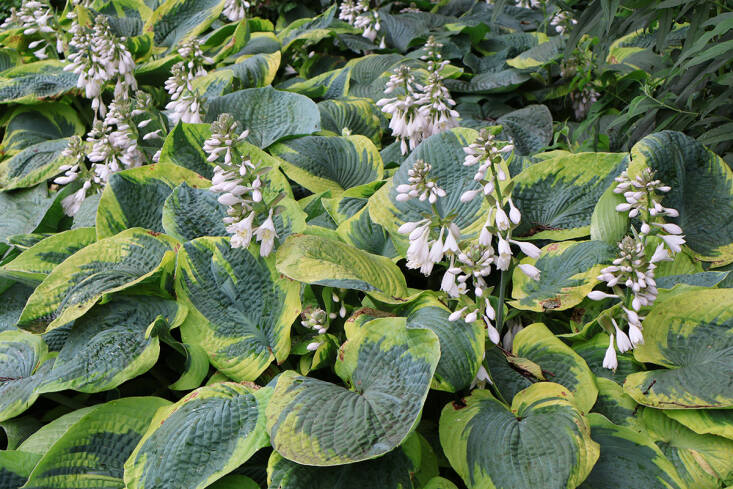
It’s tempting to do an eye-roll: Hostas are hardly a surprise in a shade garden. But their immense variety of sizes, leaf forms (texture and color), and their jasmine-scented flowers that open as summer hits its stride, make them indispensable perennials for shade. Giant varieties are undeniably imposing, and draw focus, while smaller hostas fill in difficult nooks and crannies. Bees and hummingbirds love their nectar. Hostas are hardy from zones 3 to 9.
Heuchera
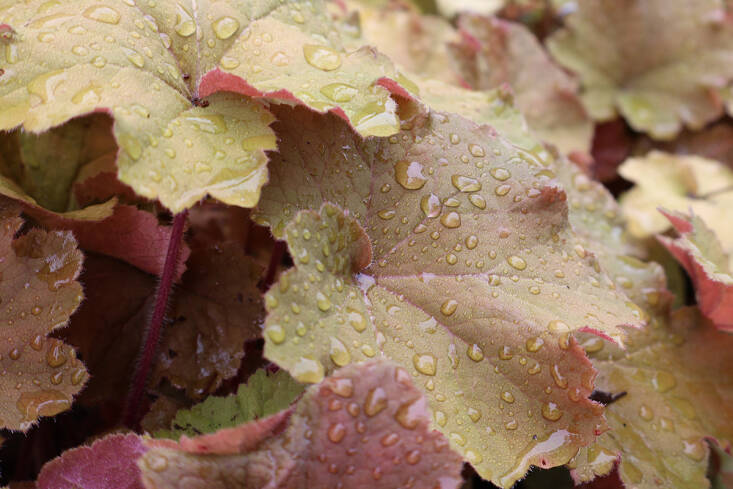
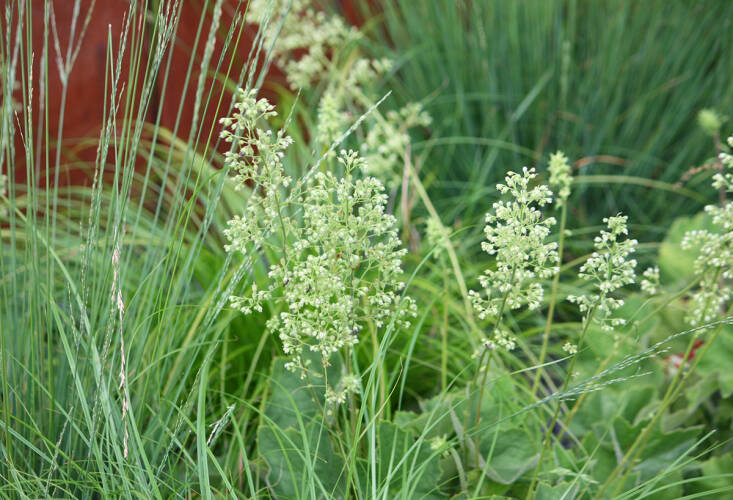
One of the most hybridized perennials for shade, North American Heucheras and their cultivars are shade garden work horses. Their velvety leaves are sumptuous and tactile, and vary in color from vivid chartreuse to green, through apricot and deep burgundy. They bloom in late summer, with tiny flowers arranged delicately on tall spires. Heucheras are hardy from zones 3 to 8.
Bugbane and black cohosh, Actaea simplex and A. racemosa
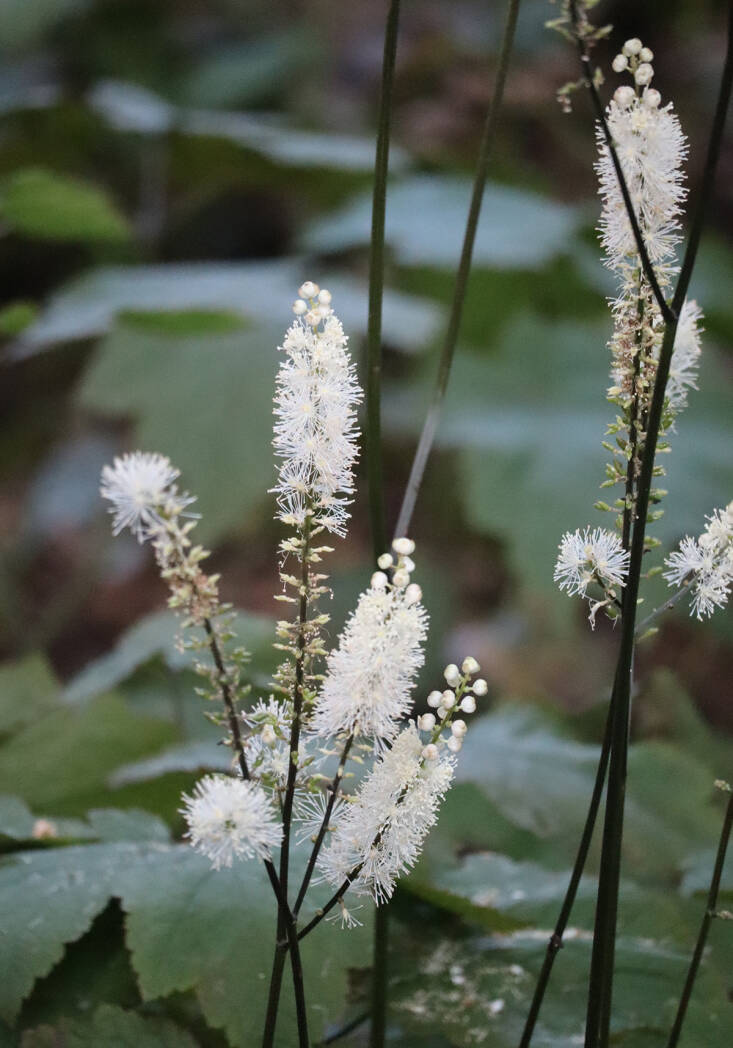
Similar-looking bugbane and black cohosh are different species of Actaea (formerly Cimicifuga). Blooming in mid to late summer, they are statuesque plants with handsome foliage and tall, willowy flowers. In warm climates they need regular, deep watering (or rain) to prevent their leaves from crisping. Bugbane and North American black coshosh are native from zones 3 to 8.
Toad lilies, Tricyrtis
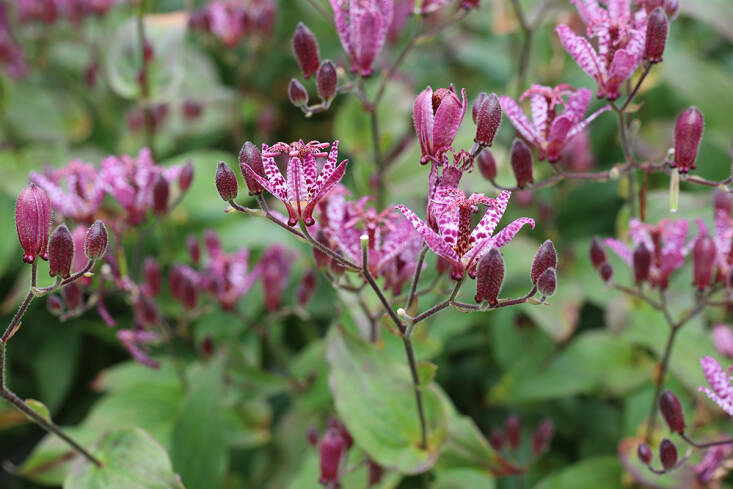
Native to the shaded forest of temperate Asia, toad lilies flower for weeks in fall. Their delicately mottled flowers are orchid-like and bring exquisite color to shaded or semi-shaded gardens. Toad lilies need ample water and are hardy from USDA zones 4 to 8.
White wood asters, Eurybia divaricata
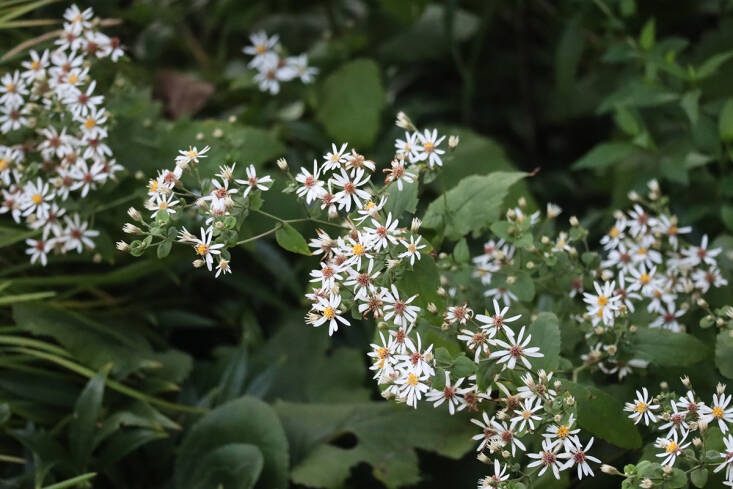
For weeks in fall, white wood asters are shade garden stars, sparkling in the shadows as trees begin to think of turning color. This native aster is hardy from zones 3 to 8.
See also:
- Epimedium 101: Everything You Need to Know About the Shade-Tolerant Groundcover
- Queen of Shade: Susanna Grant’s 7 Tips for Gardening in Tight, Dark Spaces
- Gardening 101: How to Grow Vegetables in the Shade




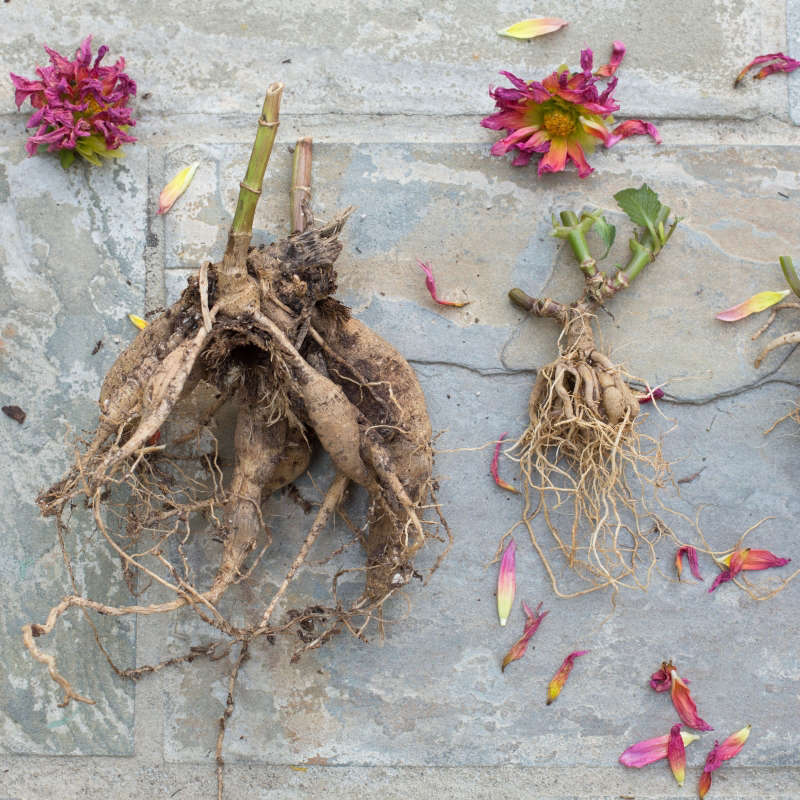



Have a Question or Comment About This Post?
Join the conversation